14 OCTOBER 2019
YOUR WORDS
Readers are invited to add their comments to any story. Click on the article to see and add.
BTN DISTRIBUTION
BTN also goes out by email every Sunday night at midnight (UK time). To view this edition click here.
The Business Travel News
PO Box 758
Edgware HA8 4QF
United Kingdom
info@btnews.co.uk
© 2022 Business Travel News Ltd.
Article from BTNews 14 OCTOBER 2019
ON TOUR: Castle Combe, motor sport and Bath – A conundrum
In terms of journalism, how do you link Castle Combe, one of the prettiest villages in England, a motor-racing circuit, and nearby Bath, ancient and once the pride of the Georgians? asks editor-in-chief Malcolm Ginsberg.
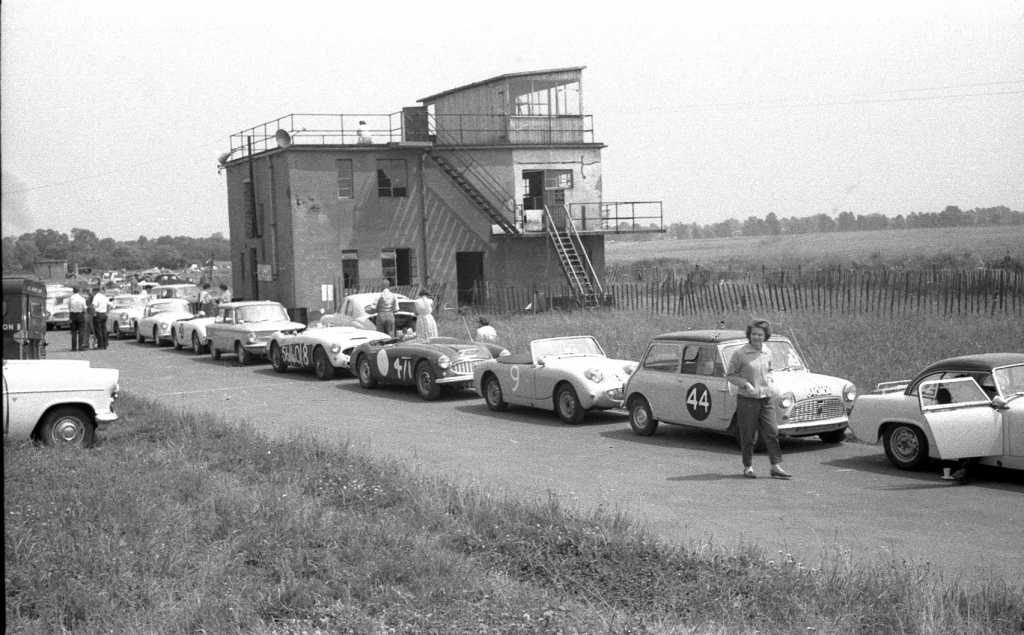 Read on as I try to cover all three in this motoring edition of Business Travel News. You might also refer to BTN 12 August 2019, a gathering of the Clan, the reason for being in this rural part of England. Our motor was the all-new Kia ProCeed, an ideal chariot for the run and the subject of this week’s Road Test.
Read on as I try to cover all three in this motoring edition of Business Travel News. You might also refer to BTN 12 August 2019, a gathering of the Clan, the reason for being in this rural part of England. Our motor was the all-new Kia ProCeed, an ideal chariot for the run and the subject of this week’s Road Test.
After an easy 100-mile run down the M4 from London, first stop was a quiet lunch at the 19th-century Manor House Hotel Castle Combe seven miles from Junction 17. Set in 365 acres of glorious parkland, with its Peter Allis-designed championship golf course, it is in a different world from that of motor sport and all the noise that it generates.
Walking past a terrace of ancient staff cottages one can slip into the centre of the tiny town with its 14th-century buttercross topping the old market building where the three principal streets of the lower village converge. Nearby is one of Castle Combe's two village pumps. Here was once the heart of the Cotswolds’ wool trade. Small stone steps near the cross were for horse riders to mount and dismount.
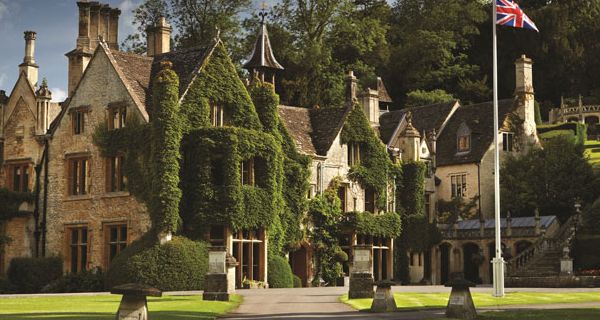 Back to the car and a careful drive through the steep narrow road that climbs out of the village into another world.
Back to the car and a careful drive through the steep narrow road that climbs out of the village into another world.
In WWII, Castle Combe airfield was created in open farmland as a Polish fighter base before being decommissioned in 1948. As a motor racing circuit, it opened in 1950 with the first meeting staged on 8 July by the Bristol Motorcycle & Light Car Club. Over the next few years, the track attracted such star names as Stirling Moss, Mike Hawthorn, Roy Salvadori and John Surtees.
What followed was a boom period for ‘club’ motorsport in the UK, new circuits, often former RAF bases, springing up all over the place, many still active (see below), with Silverstone the most famous.
Castle Combe has staged many different motorsport disciplines over the years. In 1997, Nigel Greensall established a new lap record. His Tyrrell 022 lapped the circuit at 130.93 mph (210.71km/h). However, this was the last year that the circuit would remain unaltered.
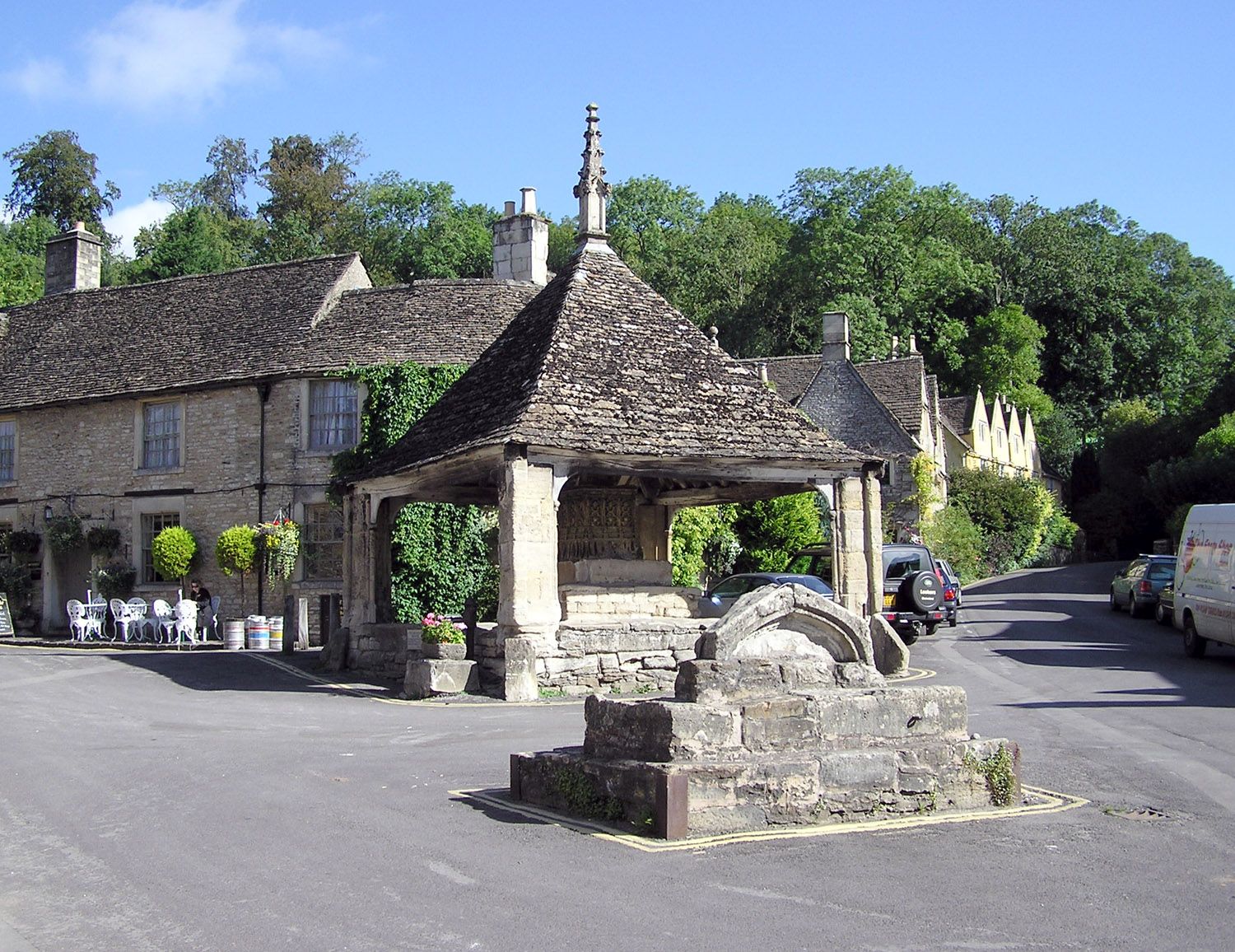 A tragic accident involving the death of a spectator forced the owners into installing two new chicanes in order to slow the cars down. The revised layout was slightly longer at 1.85mi (2.98km), and was completed over the winter of 1998-1999. More safety barriers have been erected recently to keep up with current regulations.
A tragic accident involving the death of a spectator forced the owners into installing two new chicanes in order to slow the cars down. The revised layout was slightly longer at 1.85mi (2.98km), and was completed over the winter of 1998-1999. More safety barriers have been erected recently to keep up with current regulations.
Formula Three returned to Castle Combe in 2001. However, it would not stay long. In 2005, the circuit was issued with a noise nuisance order, which meant it had to reduce sound output. The British Formula Three Championship and the British GT Championship were both louder than permitted, and so were prevented from returning.
Today, races include a home-circuit championship with classes for Saloon cars, Sports & GTs, and Formula Ford. Motorsport clubs from around the UK include the track in the events for their championships, including the 750 Motor Club, and BRSCC. Once a year, motorcycle racing takes place over two days during the summer. The weekend includes a sidecar championship and an historic race, as well as the more modern supersport races.
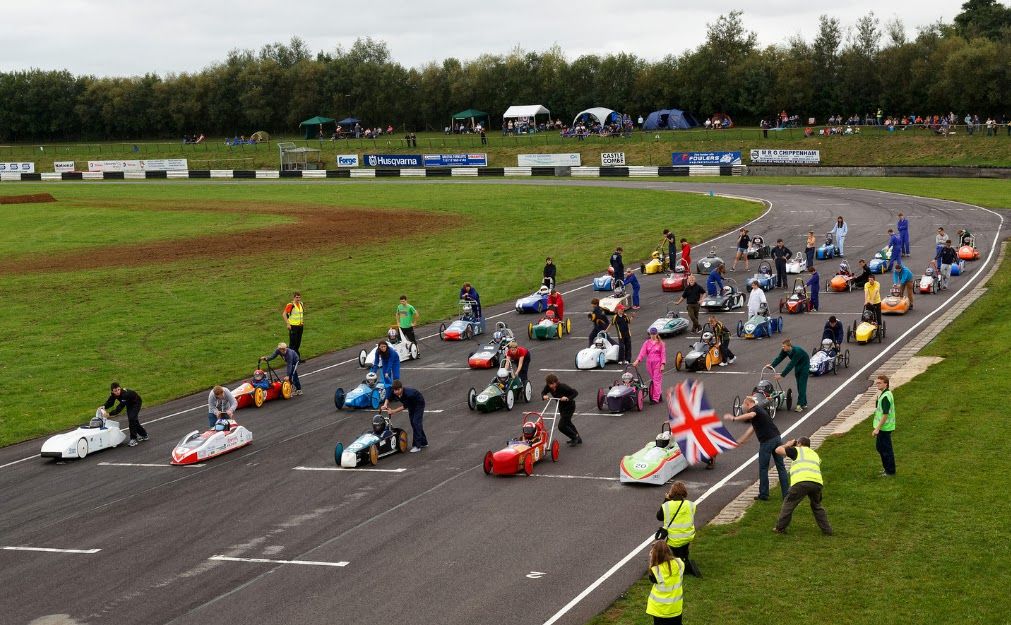 As well as holding trackdays for both cars and motorcycles, Castle Combe Circuit hosts car shows. These follow a general motorsport theme and exhibit motoring stands, market stalls, stunt demonstrations, classic displays. On certain days the circuit is able to hold track sessions.
As well as holding trackdays for both cars and motorcycles, Castle Combe Circuit hosts car shows. These follow a general motorsport theme and exhibit motoring stands, market stalls, stunt demonstrations, classic displays. On certain days the circuit is able to hold track sessions.
The shows have proven to be a big success, offering the motoring community a place to display their vehicles and use them on a racetrack in a safe and controlled environment, with each year building on the last and gaining larger and larger crowds.
During the year, events include a Spring Action Day, Classic, retro and kit car action days, Forge Motorsport action day and Japfest. Since 2001, Rallyday, an annual demonstration event for rally cars, has also been held. Young drivers, from the age of 12 upwards, can make their first tentative motoring experience, under instruction. The only restriction is to be more than 4ft 8in and parents with £55 to introduce their offspring into the world of motoring.
 Television motoring shows Top Gear and Fifth Gear have used this circuit to race or test cars. One such race was between British motorcycle racer Leon Haslam on a Ducati 1098 vs Fifth Gear presenter Tiff Needell driving a Lamborghini Gallardo Superleggera, the bike coming out on top. Top Gear used the circuit for its '70s Supercar challenge. In this episode, The Stig lapped a Vauxhall Astra. Jeremy Clarkson, local, said: "It's a fierce track this, one of the fastest in Britain, a real car breaker."
Television motoring shows Top Gear and Fifth Gear have used this circuit to race or test cars. One such race was between British motorcycle racer Leon Haslam on a Ducati 1098 vs Fifth Gear presenter Tiff Needell driving a Lamborghini Gallardo Superleggera, the bike coming out on top. Top Gear used the circuit for its '70s Supercar challenge. In this episode, The Stig lapped a Vauxhall Astra. Jeremy Clarkson, local, said: "It's a fierce track this, one of the fastest in Britain, a real car breaker."
One aspect of the circuit which has remained unchanged throughout the years is the large population of rabbits who live in the extensive tyre barriers around the circuit.
The circuit hosts an annual Greenpower event (pedal cars), one round in a series held at various racetrack-type venues. Also popular are car boot sales. In May it also hosts an annual steam rally. Another revenue stream for the venue is conference hospitality, which can include trackside experience.
Castle Combe is a friendly track, away from the mainstream of motoring but not that far from the M4; in the middle of the beautiful Cotswolds, it is an improbable circuit.
https://castlecombecircuit.co.uk
On to Bath
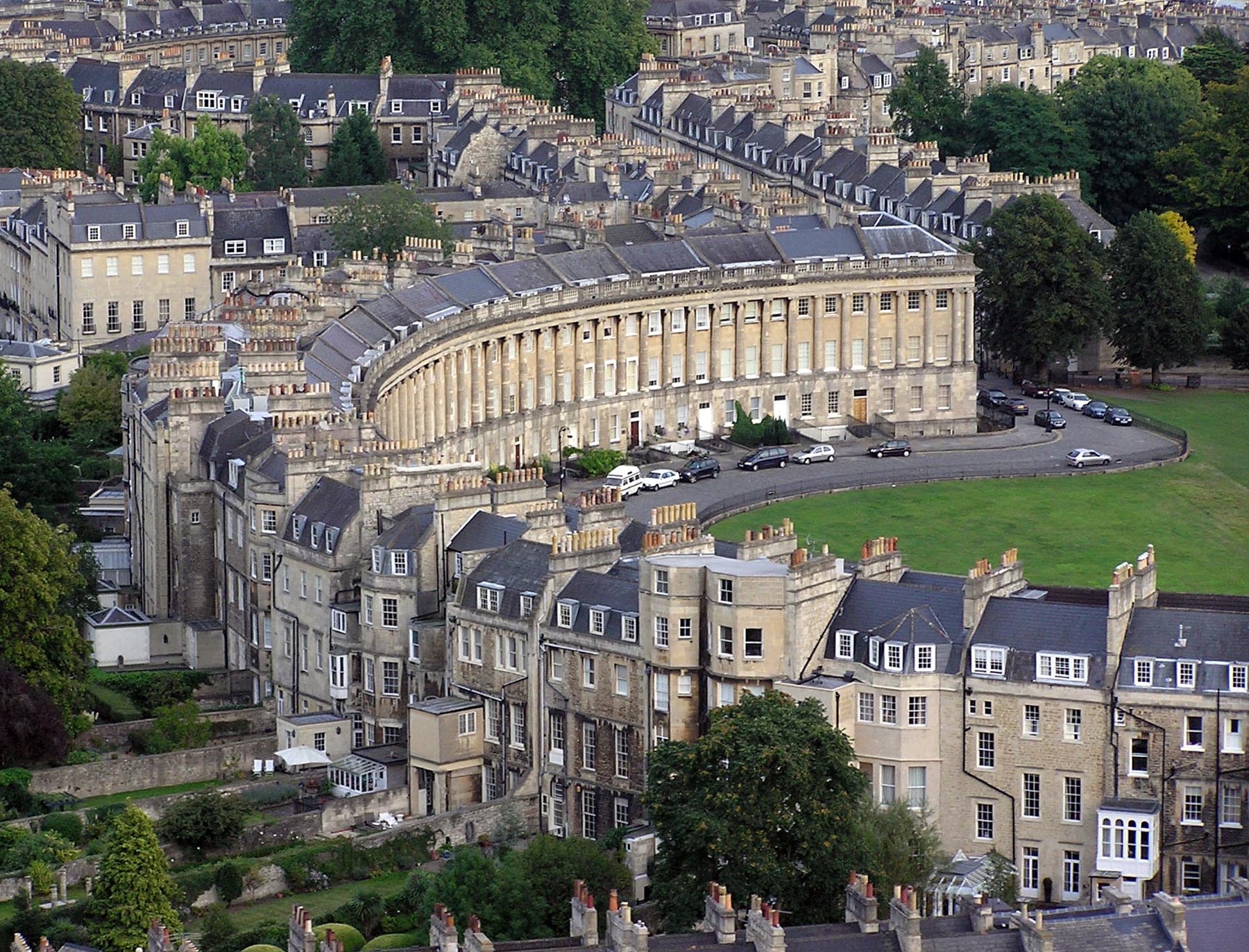 Bath is the largest city in Somerset, known for its Roman-built baths and Georgian terraces.
Bath is the largest city in Somerset, known for its Roman-built baths and Georgian terraces.
It is very accessible from London via the M4, and also Great Western Railway (GWR) with its upgraded trains reducing journey times down to as little as 1hr 18min for the 94mi run. Brunel, Britain’s finest engineer must have known Bath well, “God’s Wonderful Railway” turning a prosperous city into an even more prosperous city.
For our overnight stay this time round we chose the Apex Hotel, recently purpose-built in the very centre of the city with a car park nearby and just a short walk from the railway station. Apex is a small expanding Scottish-owned hotel group now with 10 properties including three in London. The Bath hotel is 4-star with the main conference room holding up to 400 delegates, making it the largest in the city. It has a selection of 177 good size contemporary bedrooms, including family rooms and those with balconies. It also offers fully equipped leisure facilities including a pool and sauna for guests wishing to relax, and a well provided gym. The wi-fi was excellent. Our only grumble with the visit was the famous Theatre Royal. Fully booked for our stay!
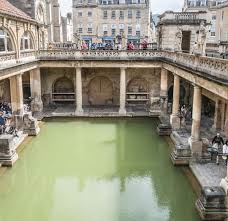
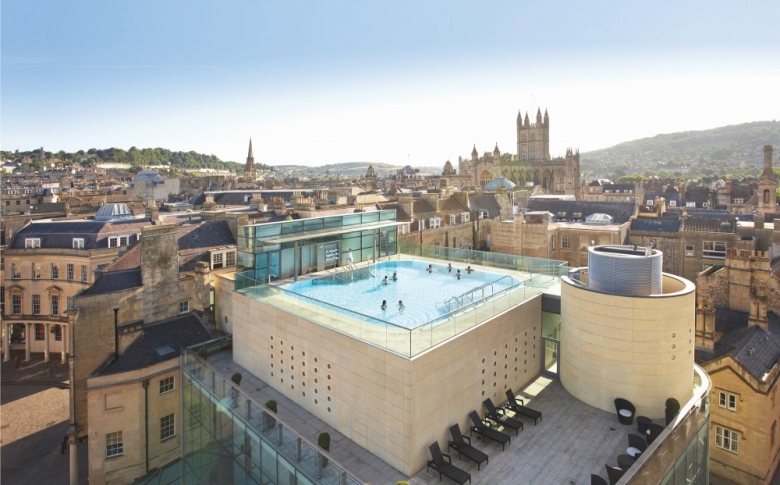 In the 17th century, claims were made for the curative properties of water from the springs, and Bath became popular as a spa town.
In the 17th century, claims were made for the curative properties of water from the springs, and Bath became popular as a spa town.
Georgian architecture, crafted from Bath stone, includes the Royal Crescent, Circus, Pump Room and Assembly Rooms where Beau Nash presided over the city's social life from 1705 until his death in 1761. Many of the streets and squares were laid out by John Wood, the Elder, and in the 18th century the city became fashionable and the population grew.
Jane Austen lived in Bath in the early 19th century and her life is celebrated with an exhibtion and tea room.
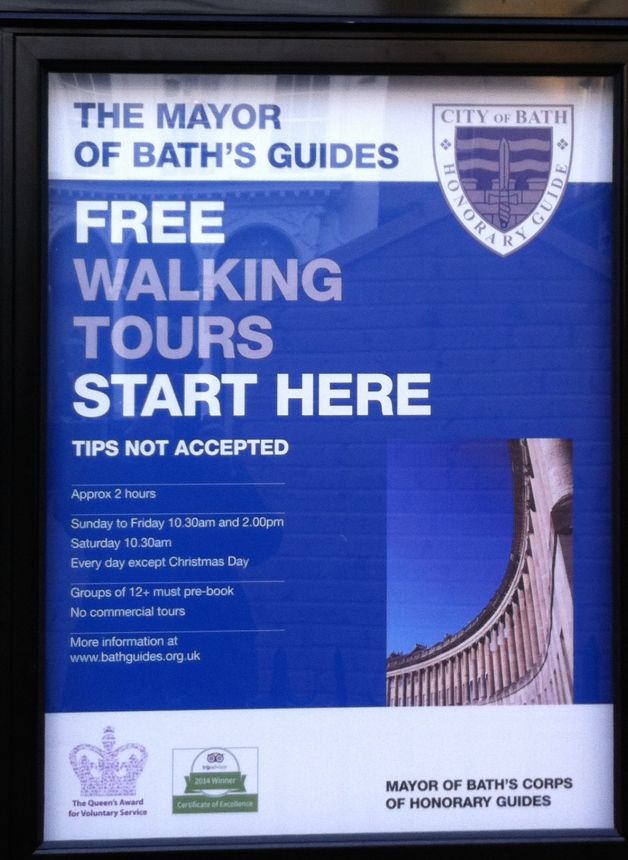 Led by The Mayor of Bath's Corps of Honorary Guides, the city offers a totally free guided walking tour regardless of the weather by volunteers who love their city. In June 2014 it received The Queen's Award for Voluntary Service. This is the highest award for a civic group in the UK and is given for outstanding work in the local community. No tips please with the assembly point the Pump Room. Starting at 10.30 and 14.00 it lasts about two hours. Our short visit included a 45 minute hop-on hop-off bus tour with an excellent loudspeaker commentary in English. There are two routes both of which you can try in a 24 hour period.
Led by The Mayor of Bath's Corps of Honorary Guides, the city offers a totally free guided walking tour regardless of the weather by volunteers who love their city. In June 2014 it received The Queen's Award for Voluntary Service. This is the highest award for a civic group in the UK and is given for outstanding work in the local community. No tips please with the assembly point the Pump Room. Starting at 10.30 and 14.00 it lasts about two hours. Our short visit included a 45 minute hop-on hop-off bus tour with an excellent loudspeaker commentary in English. There are two routes both of which you can try in a 24 hour period.
Worthwhile for a lunch or supper is Sally Lunn's, one of the oldest houses in Bath (c.1482) serving famous local delicacies. According to legend, Sally Lunn, a French refugee, arrived in 1680 and established her bakery. In the basement is the original kitchen. Very basic.
Bath was pronounced a World Heritage Site back in 1987.
Postscript
The Shelsley Walsh Speed Hill Climb (Worcester) is the oldest motorsport event to have been staged continuously (wartime excepted) on its original course, first having been run in 1905. On that first occasion, the course was 992yds (907m) in length, but in 1907 it was standardised at 1000 yards (914m), the length it remains today. Just 12ft wide and with an average gradient of 10.9% with the record held by Martin Groves in at 22.58sec in his Cosworth Gould GR55B.
We list here the current UK motor racing tracks although some of them (Aintree for instance) are much reduced from former glories.
Permanent motor sport circuits
Aintree Motor Racing Circuit, Lancaster
Anglesey Circuit, Aberffraw, Anglesey
Bedford Autodrome, Bedfordshire
Blyton, Gainsborough, Lincolnshire
Brands Hatch, Fawkham, Kent
Cadwell Park, Lincolnshire
Castle Combe Circuit, Wiltshire
Circuit of Wales, Ebbw Vale, Blaenau Gwent
Croft Circuit, North Yorkshire
Darley Moor, Derbyshire
Donington Park, Leicestershire
East Fortune, East Lothian
Goodwood Motor Racing Circuit, West Sussex
Kirkistown Circuit, County Down
Knockhill, Fife
Llandow Circuit, Vale of Glamorgan
Lydden, Canterbury, Kent
Mallory Park, Leicestershire
Nutts Corner, Belfast
Oliver's Mount, North Yorkshire
Oulton Park, Cheshire
Pembrey Circuit, Carmarthenshire
Santa Pod Raceway, Wellingborough, Northamptonshire
Silverstone Circuit, Northamptonshire
Snetterton Circuit, Norfolk
Thruxton, Hampshire
Tonfanau, Gwynedd
OUR READERS' FINEST WORDS (All times and dates are GMT)
All comments are filtered to exclude any excesses but the Editor does not have to agree with what is being said. 100 words maximum
